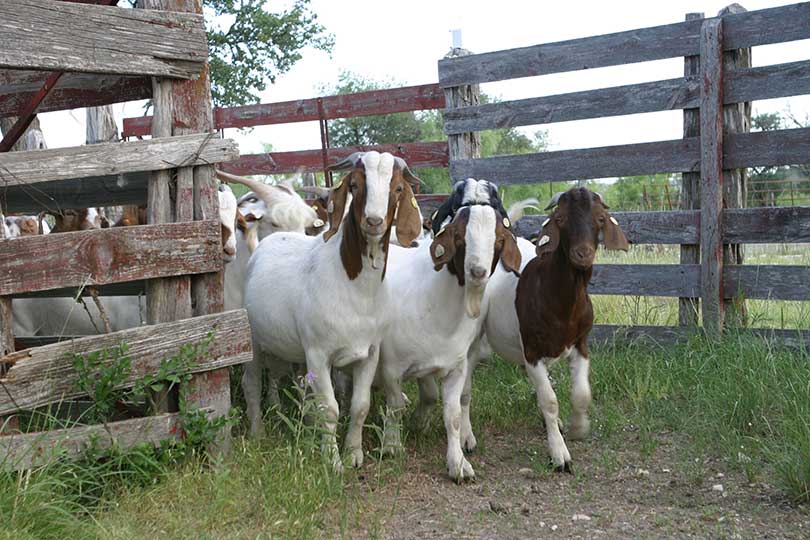The meat goat industry is performing well and has a bright future, according to a six-year study conducted by Texas A&M AgriLife experts. The study showed that price levels and demand for meat goats went up despite a decreasing supply.
Bill Thompson, Texas A&M AgriLife Extension Service economist, and Dr. Dan Waldron, Texas A&M AgriLife Research geneticist, recently finished a formal price analysis of the meat goat kid market in San Angelo, home of Producers Livestock Auction.
“Producers Livestock Auction is the largest sheep and goat market in the nation, so it has some price bearing on other sheep and goat markets across the country,” Thompson told AgriLife Today.
Thompson and Waldron evaluated meat goat prices from Producers Livestock Auction from 2010-2015.
They saw an increase in price and demand, despite a deceasing supply of meat goats. Part of the decrease in meat goats is due to farmers switching to hair sheep.
“We’re seeing a big increase in hair sheep numbers, and I think some of that drop in goat numbers is due to people switching to hair sheep,” Thompson said.
Goats are seasonal breeders and that can have a big impact on price, according to Waldron.
“Our area producers typically avoid kidding in June through September simply because the hot temperatures affect the forage quality, which affects milk production and subsequent growth of the kids,” Waldron told AgriLife Today. “That obviously affects when the kids will reach market weight.”
Thompson said the study also showed the price increases per pound as the animal’s weight increases, up to about 60 pounds with meat goat kids. These results contrast the relationship of price-weight increase in other species of livestock.
“But once they pass 60 pounds, the price per pound starts to drop,” Thompson said. “It appears 60 pounds is the preferred market weight of these animals.”
Another positive result of the study indicated that smaller goat lots perform better.
“And finally, we didn’t see much of a premium for goats sold in lot sizes above six to 12 goats,” Thompson said. “For wool sheep and cattle, we typically see a greater price paid for animals sold in larger, uniform lots.”
He said this could help attract more producers who can only maintain a small herd.
Goats provide numerous advantages for livestock owners.
“That segment of our population that prefers goat meat is growing,” Thompson said. “And there has long been a place in our range management for goats. They’re used to reduced fuel loads for fire mitigation, to control noxious plants and to increase the range efficiency as they consume plants cattle and sheep avoid. Couple these factors with strong prices and the demand for the final product and I do think the future for the meat goat industry is a bright one.”


Good article, but I’ve never heard of (hair sheep). Are you referring to the mohair that is sheared from angora goats? Sheep produce wool.
Hi David – There are actually sheep that grow hair instead of wool. The most common breed in Texas is Dorper http://www.dorper.org/aboutsheep.html or check out the Texas Dorper Association. They’re gaining popularity because they will shed their hair “fleece” and do not require sheering. It’s a really cool breed. Originated in South Africa.
Great Article
Where is the best source of information for someone thinking about getting involved in raising goats??
Hi Audrey. The best person to contact would be your local AgriLife Extension agent.